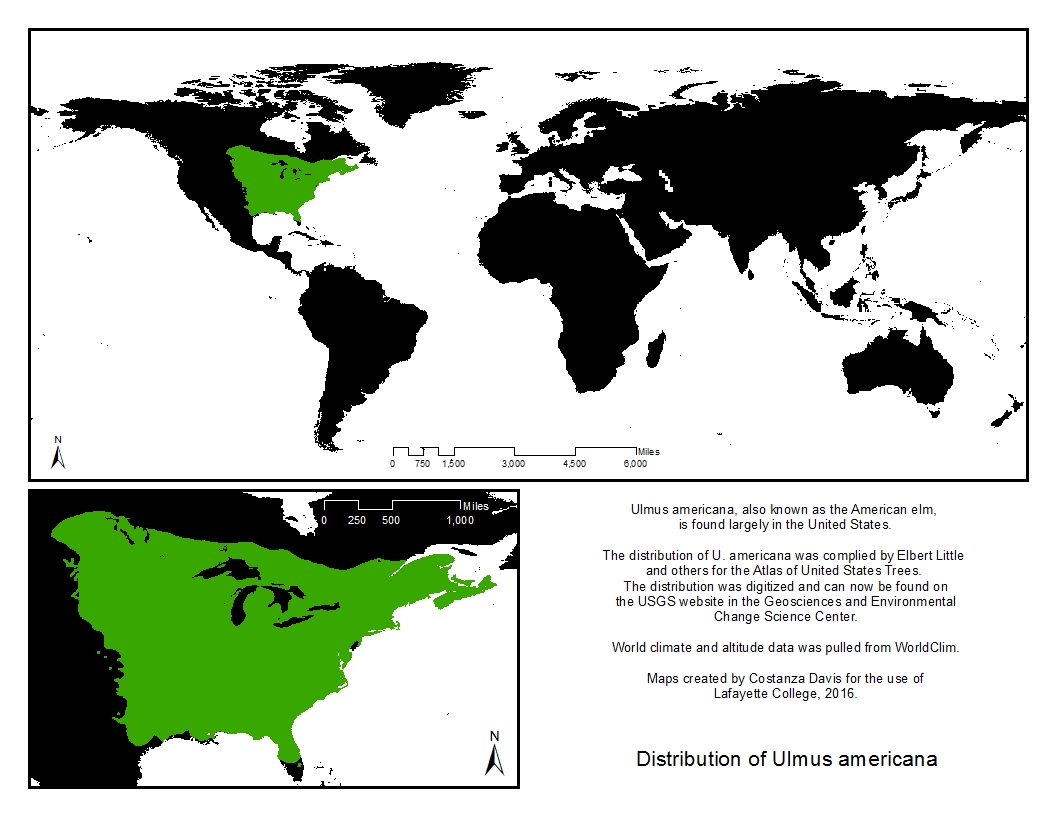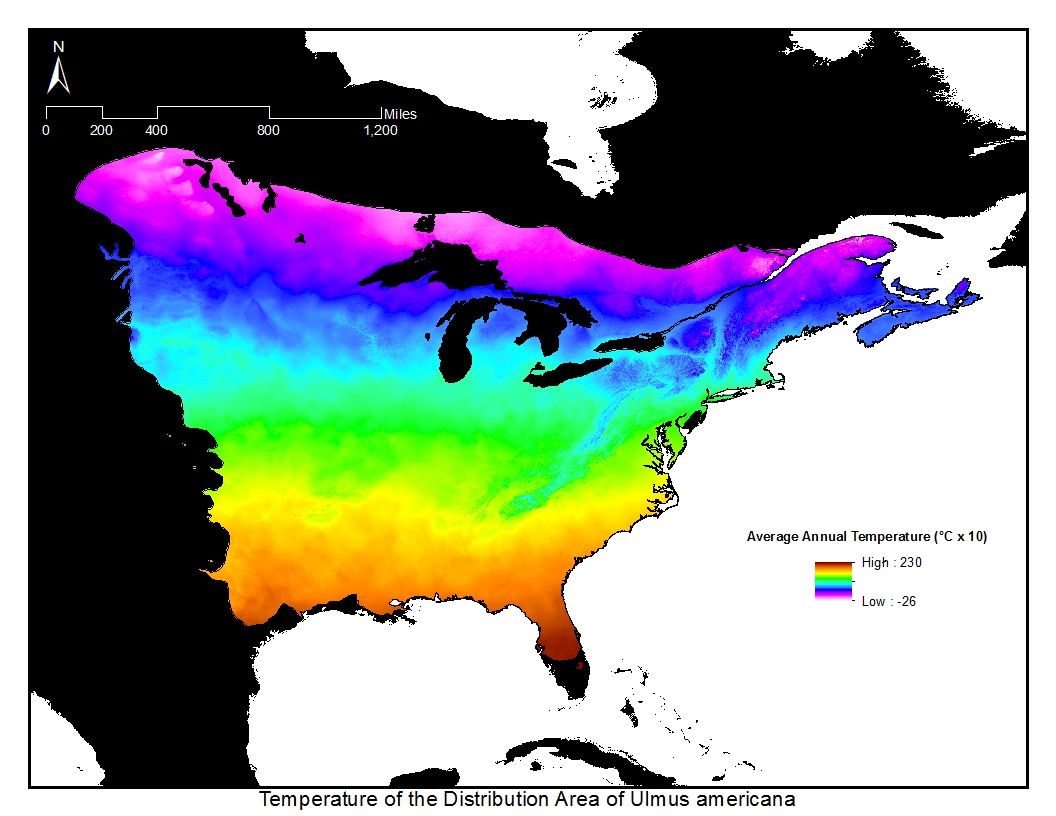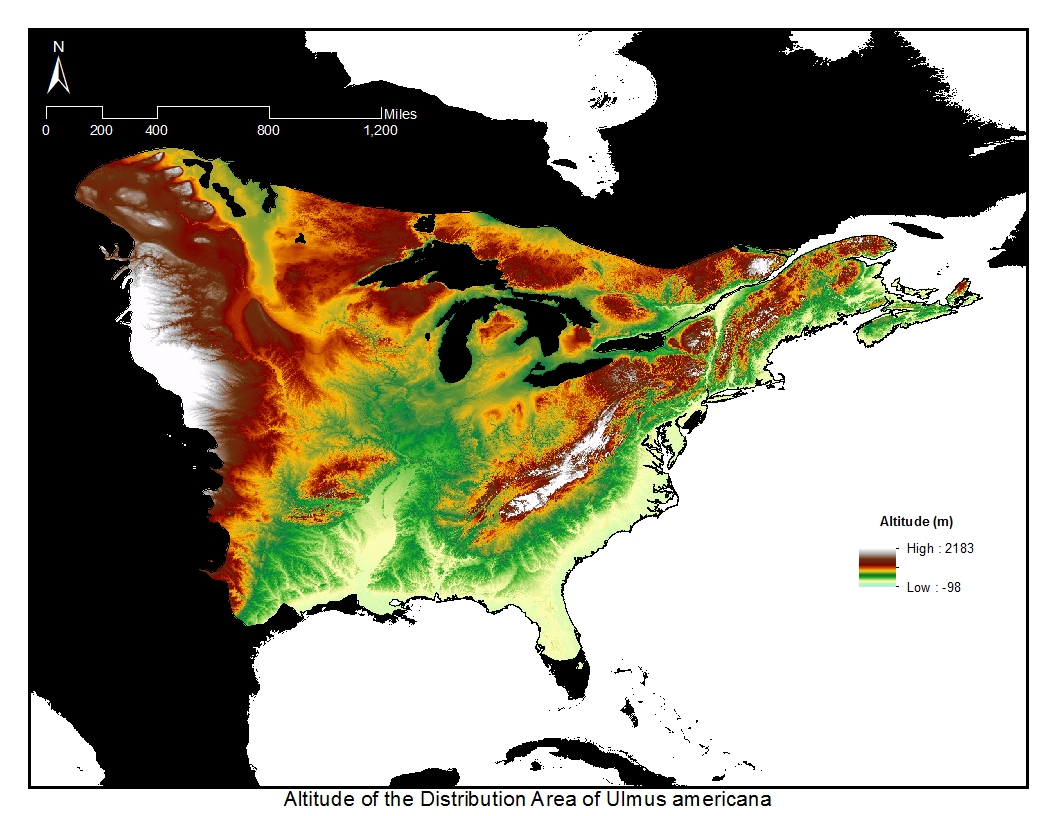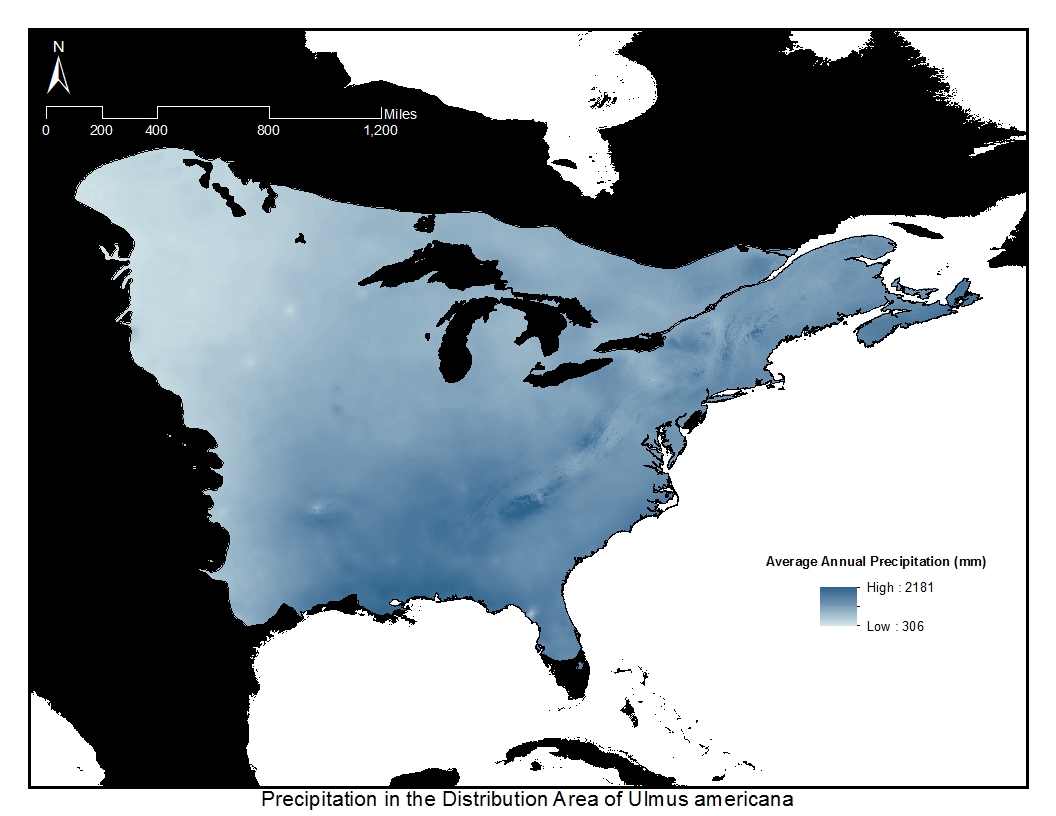The American elm, Ulmus Americana, is also known as the white elm, water elm, soft elm, or Florida elm.
American elms can grow 100 to 125 feet in height, with 50 to 60 inches in trunk diameter in good conditions. In less good conditions, heights may only reach 40 to 60 feet. This elm is also long-lived, easily reaching 200 years and sometimes extending beyond 300 years of age.
The climate range of the American elm varies greatly from warm and humid to cold and dry. Generally speaking, though the elm withstands a huge variation in precipitation, most often precipitation is during warmer seasons. Days of frost also vary, with frost-free days ranging from 80 to 320 days per year, depending on location.
Most American elms are found on flat ground, or lower regions. However, this elm does make appearances both on higher elevation flats and on low hills. It can often be found on valley bottoms near streams. Due in part to the variation in slope and elevation, the American elm can be found in soil types from well-drained sands to poorly-drained clays, and organic bogs to prairie loams, as well as any middle ground. However, it does best on rich and moist but well-drained loam. Peak growth occurs when the water table is deep.
Soil pH typically lies between 5.5 and 8.0. The American elm decomposes relatively rapidly and produces many nutrients, such as potassium and calcium, which are often desirable.
The American elm produces small pink flowers on long stems, about 2 or 3 weeks before the leaves come out. This usually has flowers appearing anywhere from February to May. Seed production begins at around 15 years of age but becomes abundant at approximately 40 years, and can continue until at least 300 years. The American elm produces large amounts of seeds. Self-pollinated flowers rarely produce viable seeds, making the American elm essentially self-sterile. Furthermore, while the tree is relatively resistant to frost and other temporal elements, the seeds are not and the annual crop can be killed with a few nights of frost.
Squirrels will eat the flowers, fruit, and seeds, and the seeds are also eaten by birds, mice, and opossums.
Seedlings do best in mineral soil with only some direct sunlight throughout the year. However, after the establishing first years, full sunlight is best. The American elm is also highly tolerant of flooding, even complete inundation, as long as the flooding occurs in the dormant season. If there is flooding in the growing season, the tree can be severely harmed.
Stumps of American elms can often produce many sprouts. Furthermore, the tree can be grown from softwood cuttings.
Unfortunately, the Dutch elm disease greatly impacted the overall elm population in North America, primarily killing American elms. This fungus is scientifically known as Ceratocystis ulmi, is one of the most devastating tree diseases in North America. Dutch elm disease was introduced to the United States in the 1930s and originated from Europe, and is still a prevalent issue for elms. Various governments and organizations are constantly on the watch for signs of Dutch elm disease in their local areas.
It is rare to see the American elm creating thickets alone, but they are found with a huge variety of other trees, and this may have in part helped preserve some expanses of American elm.




